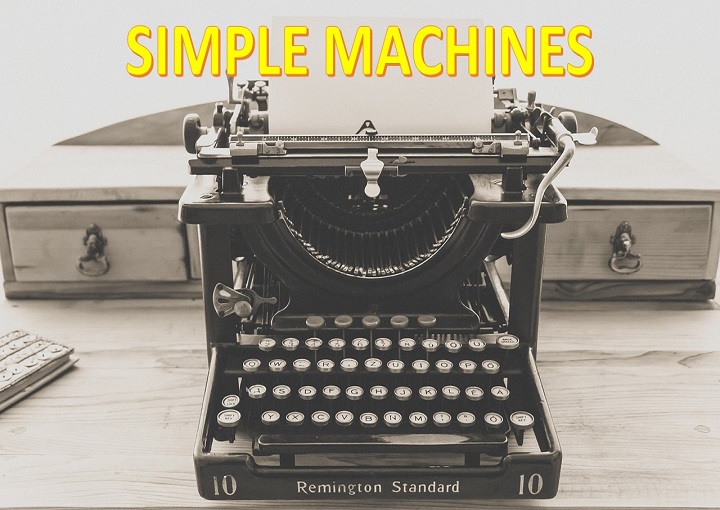Discover the fundamental role of simple machines in the field of engineering mechanics. Explore the principles behind these basic tools and their applications in various mechanical systems. Gain insights into how simple machines enhance efficiency and facilitate complex tasks, making them essential components in the world of engineering.
Simple machines play a fundamental role in the field of engineering mechanics. These devices, consisting of basic mechanical components, are designed to provide mechanical advantage and make tasks easier to perform. In this article, we will explore the different types of simple machines, their principles, applications, and the importance they hold in both engineering and everyday life.
Lever
A lever is one of the simplest and most commonly encountered types of simple machines. It consists of a rigid bar that rotates around a fixed point called a fulcrum. Levers are classified into three categories based on the relative positions of the fulcrum, effort, and load: first-class, second-class, and third-class levers. A seesaw is a classic example of a first-class lever, where the fulcrum is located between the effort and load. Levers provide mechanical advantage by increasing force or changing the direction of the force applied.
Pulley
Pulleys are another essential type of simple machine used in various engineering applications. They consist of a grooved wheel and a rope or cable running around it. Pulleys can be classified into fixed, movable, or compound pulleys. Fixed pulleys change the direction of force, while movable pulleys provide a mechanical advantage by reducing the amount of force required to lift a load. Compound pulleys combine multiple fixed and movable pulleys to further increase mechanical advantage.
Wheel and Axle
The wheel and axle is a simple machine that consists of a wheel attached to a central axle. This configuration allows for the efficient transfer of force and motion. The wheel and axle are commonly found in various mechanical systems such as vehicles, bicycles, and gears. By rotating the wheel, the axle generates a mechanical advantage, making it easier to move heavy objects or transmit power.
Inclined Plane
An inclined plane is a sloping surface that allows objects to be moved up or down with less effort. It is often used to overcome vertical height differences. The mechanical advantage of an inclined plane is determined by the length and angle of the slope. Inclined planes find applications in ramps, staircases, and even simple tools like axes and chisels. They provide a means to reduce the force needed to move objects vertically.
Wedge
A wedge is a simple machine that has a sharp, triangular shape. It is used to split or hold objects in place. Examples of wedges include knives, axes, and even doorstops. When a wedge is forced into a material, it applies pressure and splits it apart. The mechanical advantage of a wedge is determined by its angle and thickness.
Screw
A screw is a spiral-shaped inclined plane wrapped around a cylindrical shaft. It is commonly used to hold objects together or to convert rotational motion into linear motion. Screws have wide-ranging applications, from fastening objects to lifting heavy loads. The mechanical advantage of a screw is determined by the pitch and the number of threads per inch. The tightness of the threads allows for secure connections and the transmission of significant forces.
Principles of Simple Machines
Simple machines operate based on two important principles: mechanical advantage and efficiency. Mechanical advantage refers to the amplification of force or the reduction of effort required to perform a task. It is calculated by dividing the load by the effort applied. Simple machines allow us to achieve greater results with less force.
Efficiency, on the other hand, measures how well a machine converts input work into useful output work. It is expressed as a percentage, with 100% efficiency being the ideal goal. However, due to factors like friction and energy loss, no machine can achieve perfect efficiency. Engineers strive to design machines with high efficiency to minimize energy waste.
Applications of Simple Machines in Engineering Mechanics
Simple machines find extensive applications in various fields of engineering mechanics. In construction, they are used in lifting heavy materials, such as cranes employing pulley systems. In manufacturing, simple machines aid in assembly lines and production processes, increasing efficiency and productivity. Transportation systems rely on simple machines like gears and levers to transmit power and control motion. From everyday tools to complex industrial systems, simple machines form the backbone of modern engineering.
Importance of Simple Machines in Everyday Life
Simple machines play a crucial role in our daily lives, making everyday tasks easier and more efficient. Think of the lever action of a bottle opener or the pulley system in window blinds. Simple machines are present in household appliances like washing machines, vacuum cleaners, and even simple tools like scissors. They simplify our lives by reducing the effort required to accomplish tasks, whether it’s lifting, cutting, or moving objects.
The impact of simple machines extends beyond individual convenience. They have shaped our society, enabling advancements in industries such as construction, manufacturing, and transportation. Without simple machines, the development of infrastructure, manufacturing processes, and technological innovations would have been significantly hindered.
Advantages and Limitations of Simple Machines
Simple machines offer several advantages in mechanical systems:
- They provide mechanical advantage, allowing us to accomplish tasks with less force or effort.
- Simple machines are versatile and can be applied to a wide range of applications.
- They enhance efficiency by reducing the amount of work required to achieve a desired outcome.
- Simple machines are relatively easy to understand and operate, making them accessible to a wide range of users.
- They are cost-effective compared to more complex machinery and can be easily maintained.
However, it’s important to recognize the limitations of simple machines:
- Simple machines are subject to friction, which can reduce their efficiency and effectiveness.
- They have specific operational limits and may not be suitable for tasks requiring high precision or specialized functions.
- Simple machines may not be capable of handling extremely heavy loads or complex tasks that require advanced automation.
- Some simple machines, such as inclined planes and wedges, rely on external forces or gravity, limiting their use in certain environments or scenarios.
Despite these limitations, simple machines continue to play a crucial role in various industries and everyday life.
Conclusion
Simple machines are the building blocks of engineering mechanics. They provide mechanical advantage, enhance efficiency, and simplify tasks in a wide range of applications. From levers and pulleys to inclined planes and screws, each type of simple machine has its unique characteristics and functions. Understanding the principles and applications of simple machines allows engineers to design innovative solutions and improve our daily lives. Embracing the power of simple machines ensures that we continue to advance in engineering and make progress towards a more efficient and technologically advanced society.
FAQs (Frequently Asked Questions)
1. What are some common examples of levers in everyday life?
- A seesaw at the playground
- Opening a bottle with a bottle opener
- Using a crowbar to pry open a door
2. how does pulley system work?
Ans. A pulley system consists of a wheel with a grooved rim and a rope or cable that passes over it. By pulling on one end of the rope, you can lift or move heavy objects with less effort. The pulley changes the direction of the force applied, making it easier to lift the load.
3. Can you provide some real-life applications of inclined planes?
- Wheelchair ramps
- Slides at playgrounds
- Stairs
- Road inclines
4. What are the mechanical advantage of a screw?
Ans. The mechanical advantage of a screw depends on the thread pitch and the number of threads per inch. It allows for the transmission of rotational motion into linear motion and provides a mechanical advantage in terms of force multiplication.
5. Are there any safety considerations when using simple machines?
Ans. Yes, when using simple machines, it’s essential to follow proper safety precautions. This may include using protective gear, understanding weight limits, and ensuring proper maintenance of the machines. Always refer to the manufacturer’s guidelines and seek professional assistance when needed.

